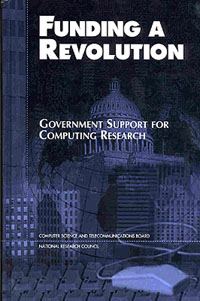 |
|
By Lynn Conway
The Mead-Conway VLSI systems work occurred in a complex context, and important part of which was the nature of government-university-industry collaboration and support for computer research during the late 70's and 80's.
 |
|
In this case, once the Mead-Conway innovations had been validated by operation of the MPC79 prototype system and the resulting VLSI design prototypes, DARPA began funding a wide range of VLSI architectural and CAD research programs, and also institutionalized Conway's rapid prototyping system - in what became know as the MOSIS system for internet-based remote access to quick turnaround chip fabrication.
| Technology | Investigator/Institution | Product/Company |
| RISC Architectures | ||
| RISC I and RISC II | David Patterson, UC-Berkeley | SPARC, Sun Microsystems, Inc. |
| MIPS | John Hennessy, Stanford University | MIPS Computers, Inc. (now part of Silicon Graphics, Inc.) |
| Parallel Processors | ||
| Connection Machine | Danny Hillis, MIT | Thinking Machines, Inc. |
| Cosmic Cube | Charles Seitz, CalTech | iPSC (Intel) |
| WARP | H.T. Kung, Carnegie Mellon University | iWARP (Intel) |
| Computer Systems | ||
| Geometry Engine | Jim Clark, Stanford University | Silicon Graphics, Inc. |
| SUN (networked) | Forest Baskett, Stanford University | Sun Microsystems, Inc. |
| Design Tools | ||
| Caesar | John Ousterhout, UC-Berkeley | Public domain |
| Magic | John Ousterhout, UC-Berkeley | Multiple* |
LynnConway.com > Research Impact > Funding a Revolution